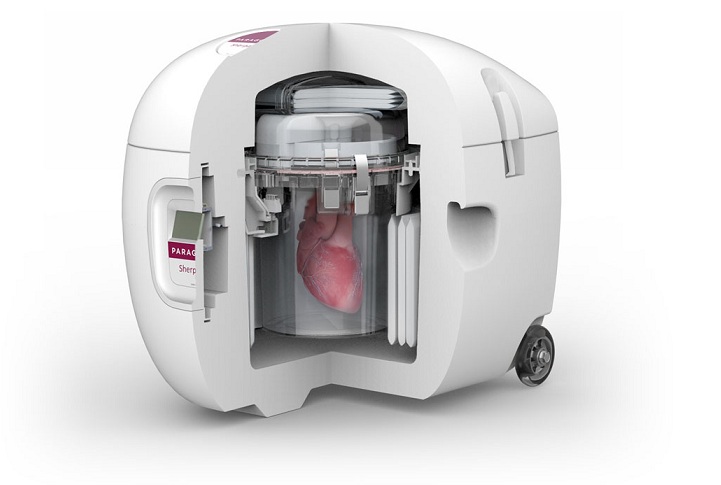Paragonix Technologies, the leading hypothermic donor organ preservation provider, announced the first-in-human clinical use of the investigational NRP-DCD Method by the University of Nebraska Medical Center to recover a donor heart and transport it utilizing the Paragonix SherpaPak® System. This novel method to advance heart transplantation utilizing DCD (donation after circulatory death) donors is an innovative combination of proven techniques developed by the University of Nebraska Medical Center to increase the distance DCD donor organs can travel, thus increasing the potential donor pool.
In a recovery led by Dr. Marian Urban, the Nebraska team successfully recovered and transported a donor heart with a cold ischemic time of 156 minutes from a distant site of donation to the Nebraska Medical Center, where a 65-year old male suffering from ischemic cardiomyopathy was successfully transplanted with the organ. The patient, critically ill and on the waiting list, was able to secure a matching donor sooner than expected because of the ability to utilize this heart as a result of DCD donation.
The NRP-DCD method combines a technique called Normothermic Regional Perfusion (NRP), which utilizes commonly available circulatory support systems to resuscitate the donor organ function before transport, with advanced preservation and transportation in the Paragonix SherpaPak® Cardiac Transport System (CTS). The University of Nebraska Medical Center and its clinical partner, Nebraska Medicine, recently cited as one of the Top 10 most trusted health system brands, is conducting a NRP-DCD study with oversight from their Institutional Review Board (IRB). The study is registered with the National Institutes of Health (NIH) on ClinicalTrials.gov (NCT 05038943, https://clinicaltrials.gov/ct2/show/NCT05038943).
“Our center has extensive experience in utilizing NRP to transplant donor hearts within our transplant center.” said Dr. Marian Urban, Assistant Professor, Division of Cardiac Surgery, University of Nebraska Medical Center. “Now with the addition of the Paragonix SherpaPak, we have been able to utilize this life-saving approach over a greater distance and ischemic time. With this first-in-human case, the NRP-DCD method has provided a donor heart to a patient who might have not had the opportunity to receive a conventionally donated heart in the near future. We are excited to see this combination of technologies come together with the aim to provide more patients with the donor hearts they desperately require. We believe this approach could be replicated at other transplant centers and has the potential to increase the number of hearts available to donors in need.”
Currently, DCD donors are not frequently considered for heart transplantation, because of the potential injury that takes place once the heart stops beating. However, some estimates believe the use of DCD donor hearts could increase heart transplantation by as much as 30%1. The University of Nebraska’s research using NRP to resuscitate the heart and the Paragonix SherpaPak CTS to transport the heart, will help assess whether donor organs that are unused today can be used to save the lives of transplant patients on the waitlist who desperately need them.
“We at Paragonix are incredibly proud to be part of this exciting event: the innovative approach developed by Dr. John Um and the team at University of Nebraska Medical Center has already impacted a patient. We are excited about the potential to increase the donor pool and provide more patients with the donor organs they are desperately waiting for,” said Lisa Anderson, PhD, CEO of Paragonix Technologies.


















